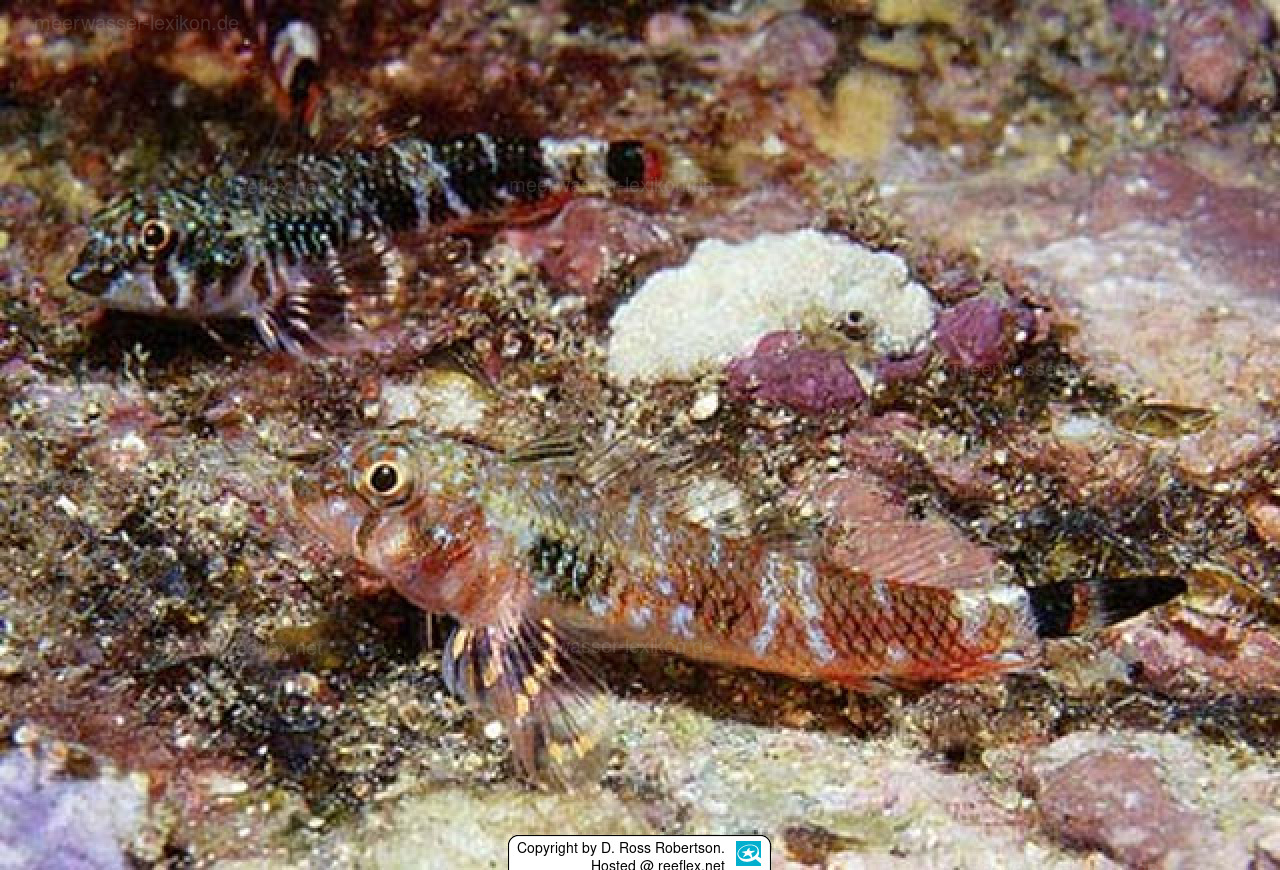Info
Fowler, 1944
Very special thanks for the first photo of Axoclinus lucillae to the famous Australien ichthyologist Dr. Ross Robertson.
Dr. Robertson has taken his photo at Gorgona Island, Columbia.
The Panama triplefin is endemic to the Eastern Pacific and is found from central Mexico to Coloumbia.
Axoclinus lucillae is found in shallow rocky and coral areas to depths of 20 meters, where it feed on tiny invertebrates and algae.
Classification: Biota > Animalia (Kingdom) > Chordata (Phylum) > Vertebrata (Subphylum) > Gnathostomata (Superclass) > Pisces (Superclass) > Actinopteri (Class) > Perciformes (Order) > Blennioidei (Suborder) > Tripterygiidae (Family) > Tripterygiinae (Subfamily) > Axoclinus (Genus) > Axoclinus lucillae (Species)
Jumping guard
A jumping guard prevents (nocturnal) fish from jumping out.
Wrasses, blennies, hawkfishs and gobies jump out of an unprotected tank in fright if their night rest is disturbed, unfortunately these jumpers are found dried up in the morning on carpets, glass edges or later behind the tank.
https://www.korallenriff.de/en/article/1925_5_Jump_Protection_Solutions_for_Fish_in_the_Aquarium__5_Net_Covers.html
A small night light also helps, as it provides the fish with a means of orientation in the dark!
Very special thanks for the first photo of Axoclinus lucillae to the famous Australien ichthyologist Dr. Ross Robertson.
Dr. Robertson has taken his photo at Gorgona Island, Columbia.
The Panama triplefin is endemic to the Eastern Pacific and is found from central Mexico to Coloumbia.
Axoclinus lucillae is found in shallow rocky and coral areas to depths of 20 meters, where it feed on tiny invertebrates and algae.
Classification: Biota > Animalia (Kingdom) > Chordata (Phylum) > Vertebrata (Subphylum) > Gnathostomata (Superclass) > Pisces (Superclass) > Actinopteri (Class) > Perciformes (Order) > Blennioidei (Suborder) > Tripterygiidae (Family) > Tripterygiinae (Subfamily) > Axoclinus (Genus) > Axoclinus lucillae (Species)
Jumping guard
A jumping guard prevents (nocturnal) fish from jumping out.
Wrasses, blennies, hawkfishs and gobies jump out of an unprotected tank in fright if their night rest is disturbed, unfortunately these jumpers are found dried up in the morning on carpets, glass edges or later behind the tank.
https://www.korallenriff.de/en/article/1925_5_Jump_Protection_Solutions_for_Fish_in_the_Aquarium__5_Net_Covers.html
A small night light also helps, as it provides the fish with a means of orientation in the dark!







 Dr. D. Ross Robertson, Australien
Dr. D. Ross Robertson, Australien






